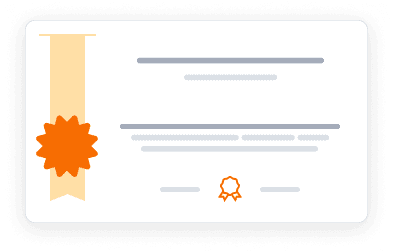This course is part of Teaching with Physical Computing.
Elevate your teaching practice with this comprehensive course on implementing project-based learning through physical computing. Learn to create engaging, real-world problem-solving experiences using Arduino, Micro:bit, and Raspberry Pi. The course focuses on practical classroom strategies, group work management, and curriculum integration while building student resilience and motivation. Perfect for educators seeking to transform their teaching approach and create more dynamic, hands-on learning environments.
Instructors:
English
English
What you'll learn
Develop effective project-based learning implementation strategies
Integrate physical computing into formal curriculum
Manage collaborative learning environments successfully
Build student resilience in problem-solving activities
Create engaging hands-on learning experiences
Implement effective group work management techniques
Skills you'll gain
This course includes:
PreRecorded video
Classroom investigation, Practical assignments
Access on Mobile, Tablet, Desktop
Limited Access access
Shareable certificate
Closed caption
Get a Completion Certificate
Share your certificate with prospective employers and your professional network on LinkedIn.
Created by
Provided by

Top companies offer this course to their employees
Top companies provide this course to enhance their employees' skills, ensuring they excel in handling complex projects and drive organizational success.





There are 12 modules in this course
This course provides educators with practical tools and strategies for implementing project-based learning using physical computing devices. It covers essential aspects of classroom management, curriculum integration, and student engagement. The program emphasizes hands-on experience with various hardware platforms while teaching effective methods for fostering collaborative learning environments. Through comprehensive modules on building student resilience, managing group work, and practical considerations, educators learn to create engaging and effective project-based learning experiences.
Introduction
Module 1
Physical computing
Module 2
Project-based learning (PBL)
Module 3
Links to the formal curriculum and using PBL in formal assessments
Module 4
PBL toolkit
Module 5
PBL across the ages
Module 6
Building resilience in learners
Module 7
Group work in PBL
Module 8
Keep it super simple
Module 9
Practical considerations for PBL
Module 10
Classroom strategies
Module 11
Classroom investigation
Module 12
Fee Structure
Individual course purchase is not available - to enroll in this course with a certificate, you need to purchase the complete Professional Certificate Course. For enrollment and detailed fee structure, visit the following: Teaching with Physical Computing
Instructors

6 Courses
Bridging Computing Education and Physical Computing at The Open University and Arm Education
Oli Howson serves as a Lecturer in Computing & Communications at The Open University, bringing a wealth of experience from his background in secondary education and educational technology. His teaching portfolio at the university includes Web Technologies and Algorithms & Data Structures for second-year undergraduate students. Oli's research interests focus on innovative areas of computing education, including physical computing, making, and the application of virtual reality in educational settings.

8 Courses
Innovating Computer Science Education at Arm
Robert (Rob) Leeman serves as the Education Solutions Manager in the Arm School Program, bringing a rich background in Computer Science teaching, assessment, and curriculum development to his role. His work focuses on empowering learners with opportunities to develop interest, knowledge, and skills in STEM, while promoting effective technology application in K-12 education.
Testimonials
Testimonials and success stories are a testament to the quality of this program and its impact on your career and learning journey. Be the first to help others make an informed decision by sharing your review of the course.
Frequently asked questions
Below are some of the most commonly asked questions about this course. We aim to provide clear and concise answers to help you better understand the course content, structure, and any other relevant information. If you have any additional questions or if your question is not listed here, please don't hesitate to reach out to our support team for further assistance.



